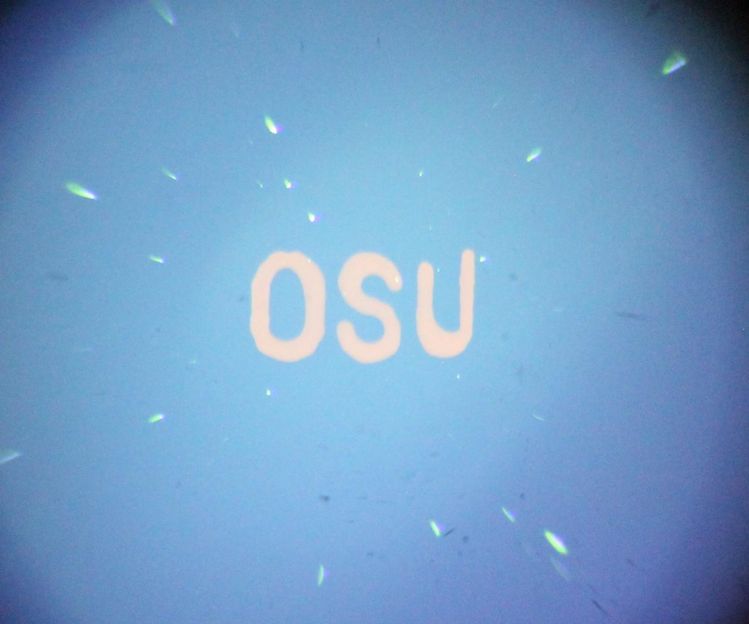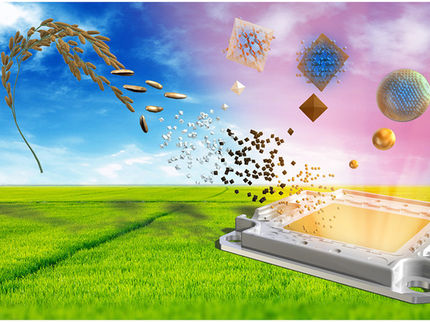'Quantum dot' technology may help light the future
Advances at Oregon State University in manufacturing technology for "quantum dots" may soon lead to a new generation of LED lighting that produces a more user-friendly white light, while using less toxic materials and low-cost manufacturing processes that take advantage of simple microwave heating.

The orange color in the letters 'OSU' is produced from 'quantum dots' viewed under a microscope, as they absorb blue light and emit the light as orange -- an illustration of some of the potential of new technology being developed at Oregon State University
Oregon State University
The cost, environmental, and performance improvements could finally produce solid state lighting systems that consumers really like and help the nation cut its lighting bill almost in half, researchers say, compared to the cost of incandescent and fluorescent lighting.
The same technology may also be widely incorporated into improved lighting displays, computer screens, smart phones, televisions and other systems.
A key to the advances is use of both a "continuous flow" chemical reactor, and microwave heating technology that's conceptually similar to the ovens that are part of almost every modern kitchen.
The continuous flow system is fast, cheap, energy efficient and will cut manufacturing costs. And the microwave heating technology will address a problem that so far has held back wider use of these systems, which is precise control of heat needed during the process. The microwave approach will translate into development of nanoparticles that are exactly the right size, shape and composition.
"There are a variety of products and technologies that quantum dots can be applied to, but for mass consumer use, possibly the most important is improved LED lighting," said Greg Herman, an associate professor and chemical engineer in the OSU College of Engineering.
Some of the best existing LED lighting now being produced at industrial levels, Herman said, uses cadmium, which is highly toxic. The system currently being tested and developed at OSU is based on copper indium diselenide, a much more benign material with high energy conversion efficiency.
Original publication
Most read news
Original publication
Robert C. Fitzmorris, Richard P. Oleksak, Zheng Zhou, Benjamin D. Mangum, Juanita N. Kurtin, Gregory S. Herman; "Structural and Optical Characterization of CuInS2 Quantum Dots Synthesized by Microwave-Assisted Continuous Flow Methods"; Journal of Nanoparticle Research; 2015
Organizations
Other news from the department science

Get the chemical industry in your inbox
From now on, don't miss a thing: Our newsletter for the chemical industry, analytics, lab technology and process engineering brings you up to date every Tuesday and Thursday. The latest industry news, product highlights and innovations - compact and easy to understand in your inbox. Researched by us so you don't have to.





























































